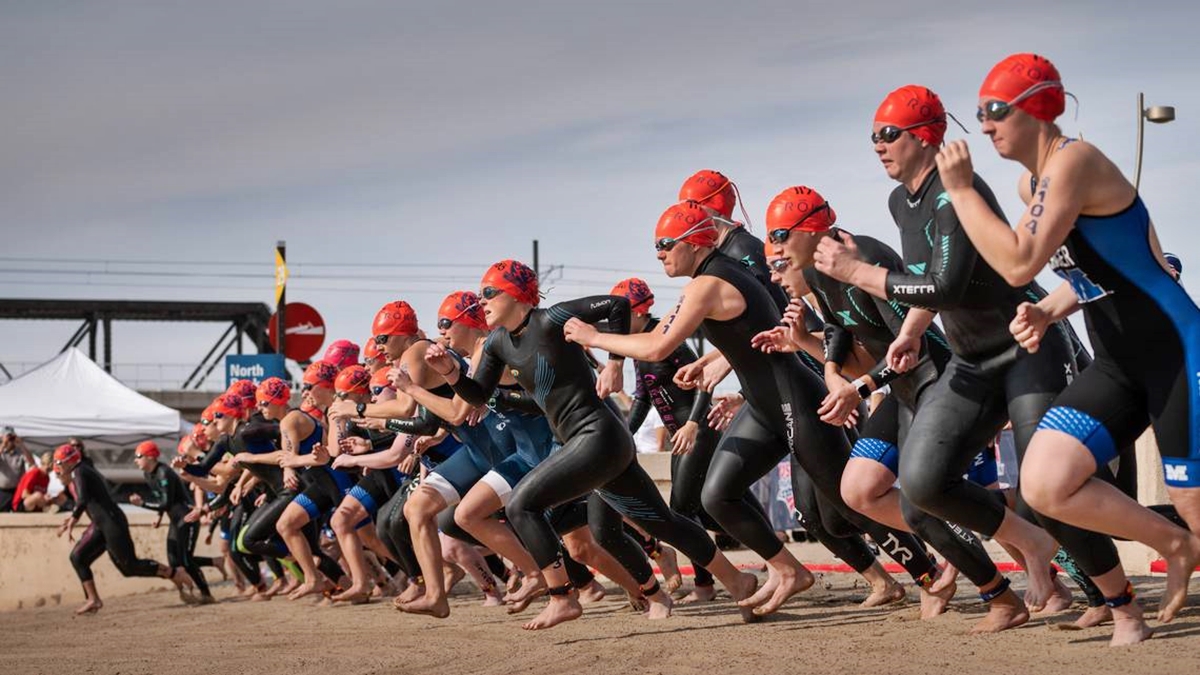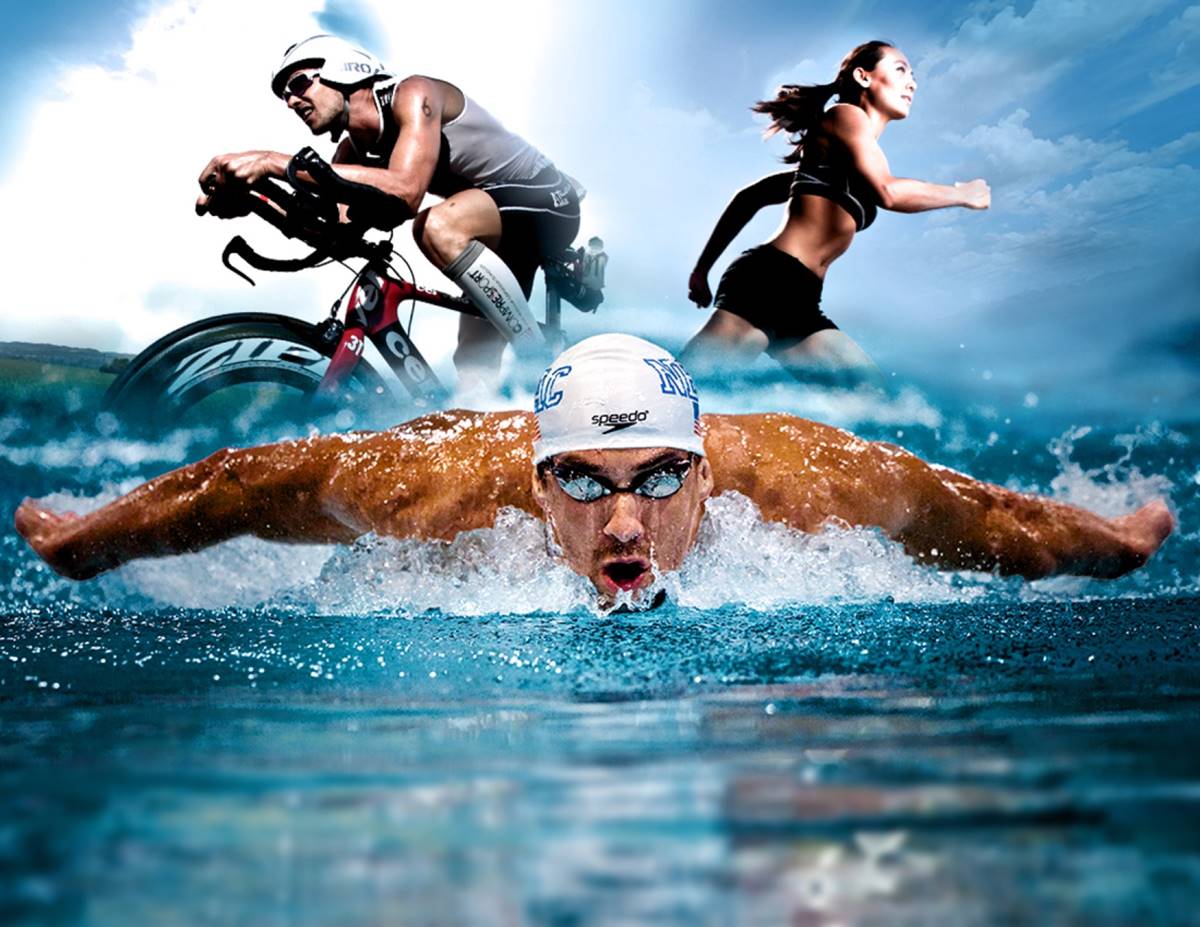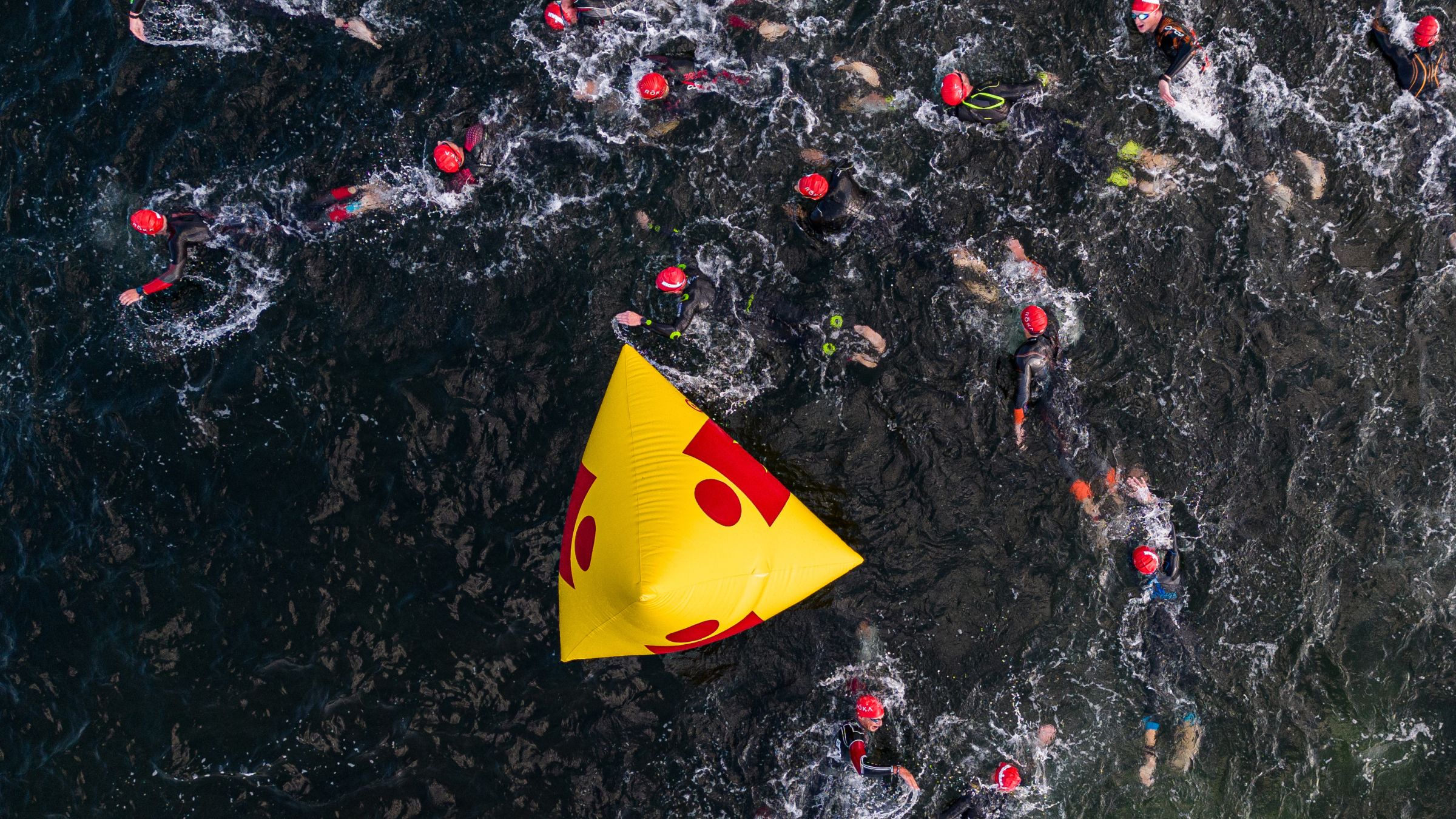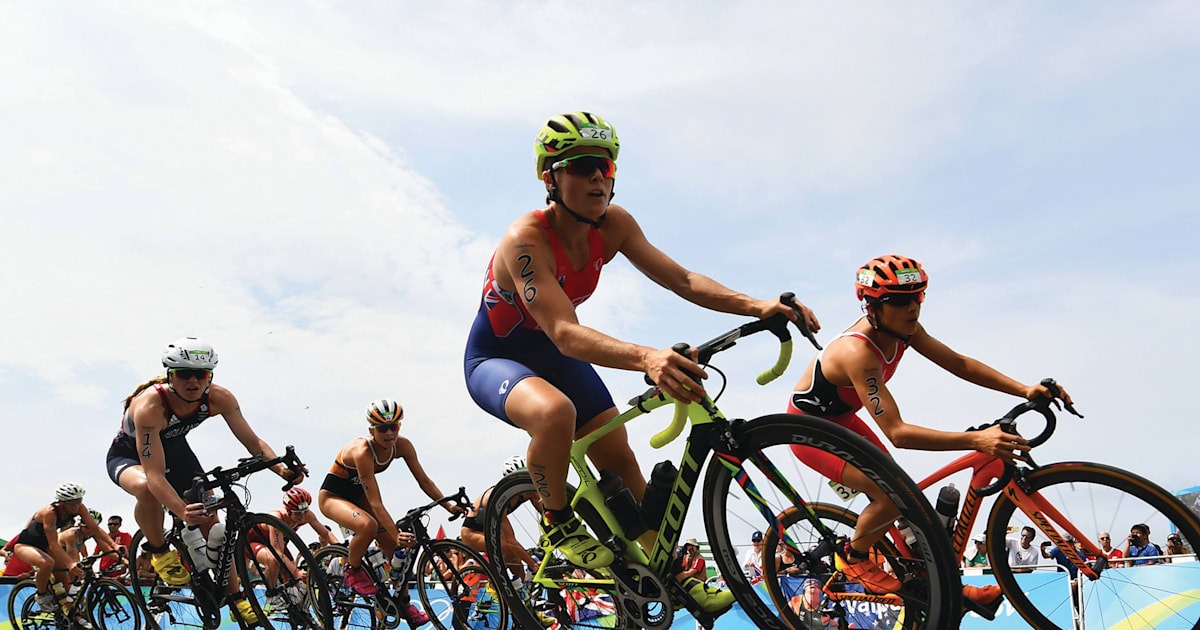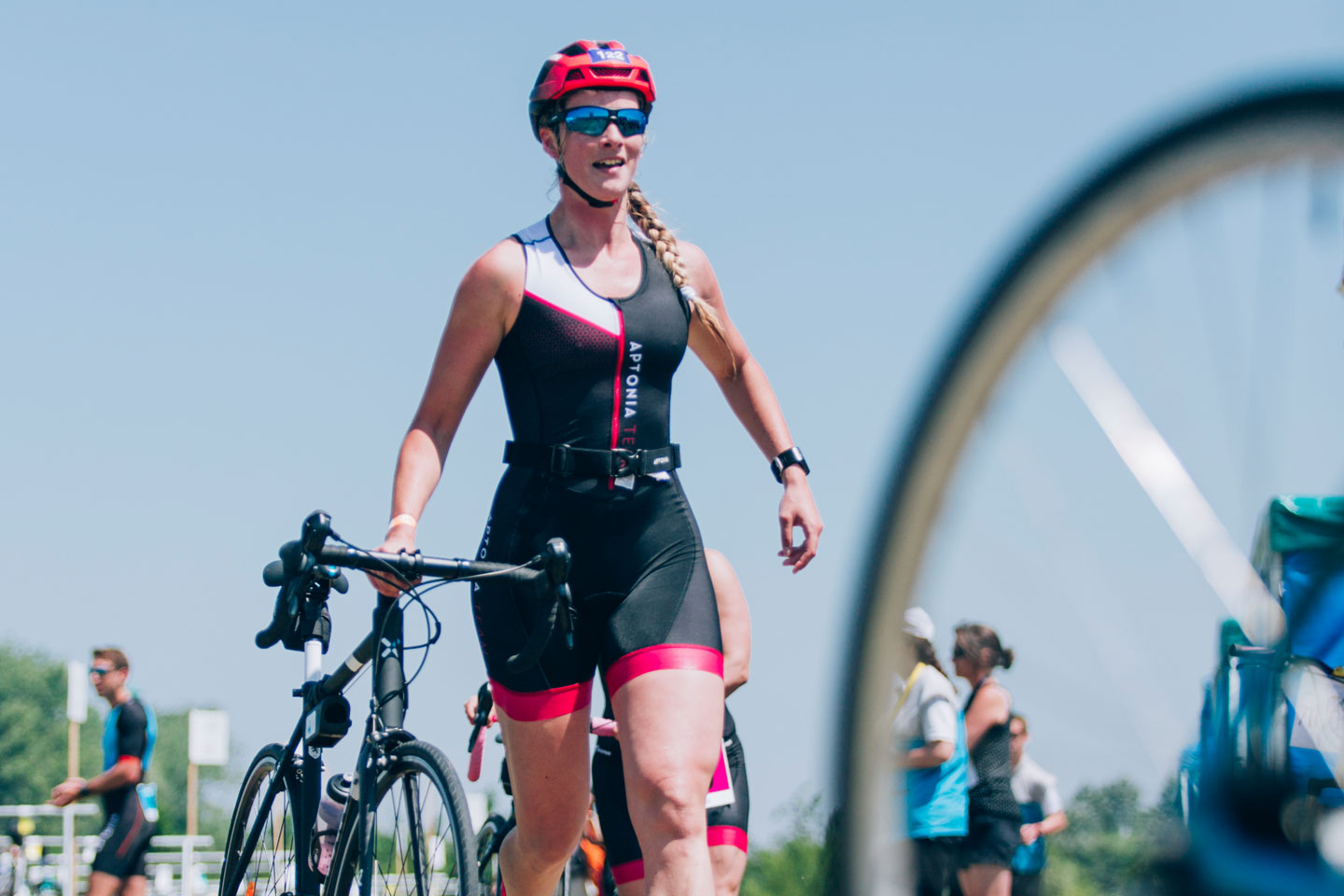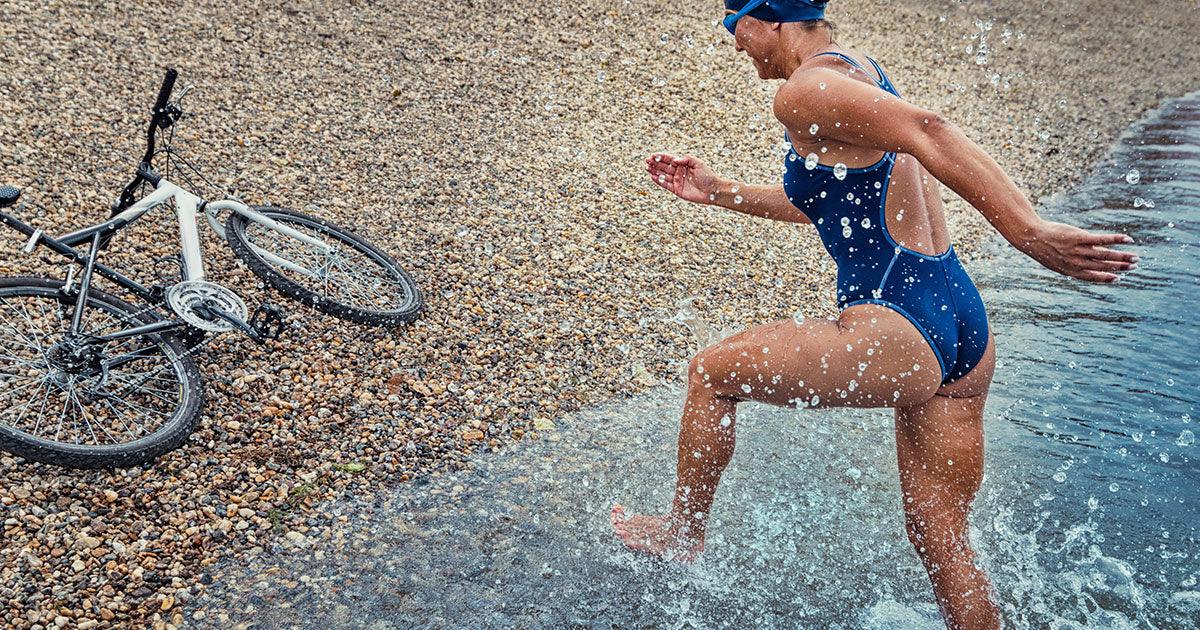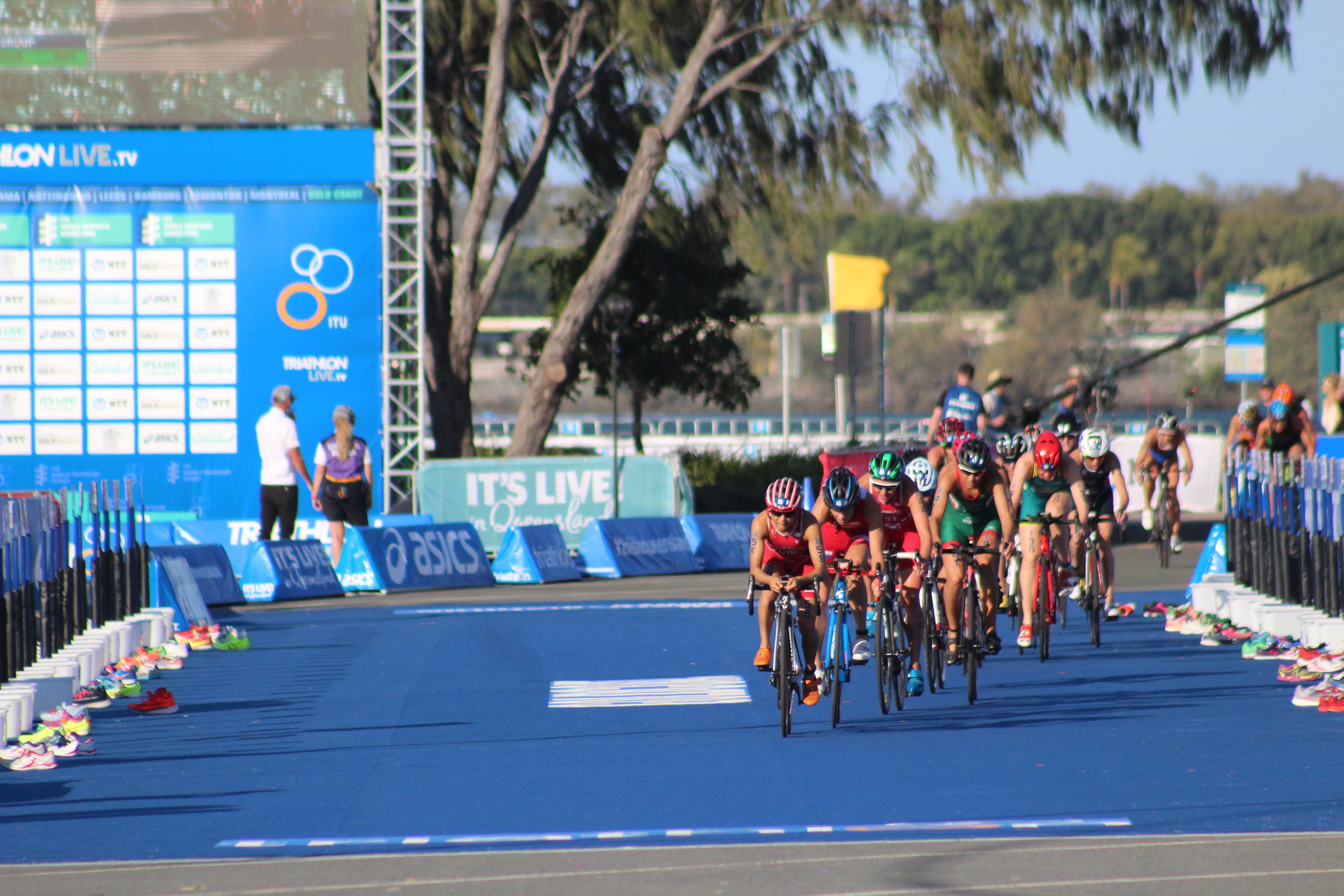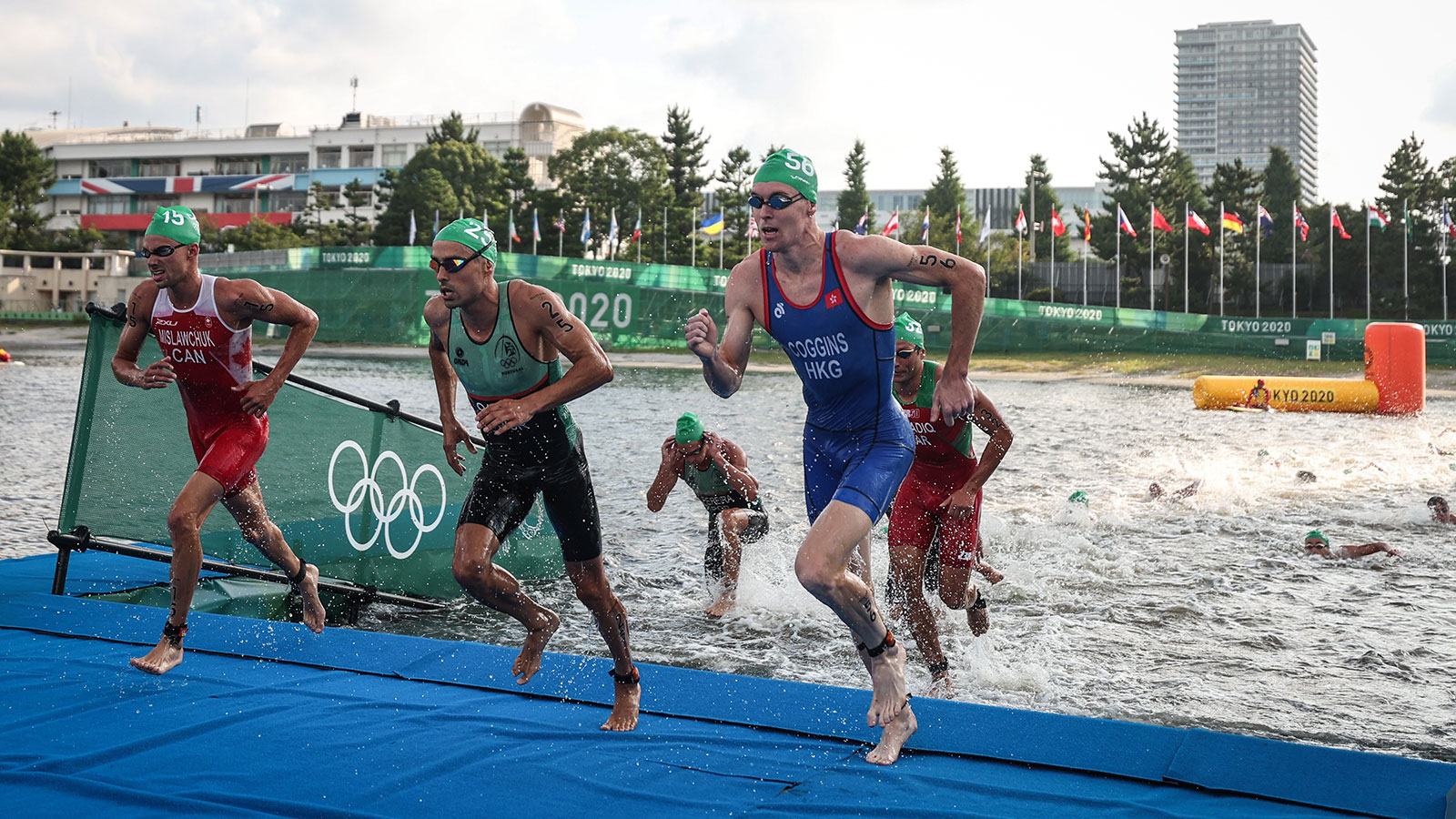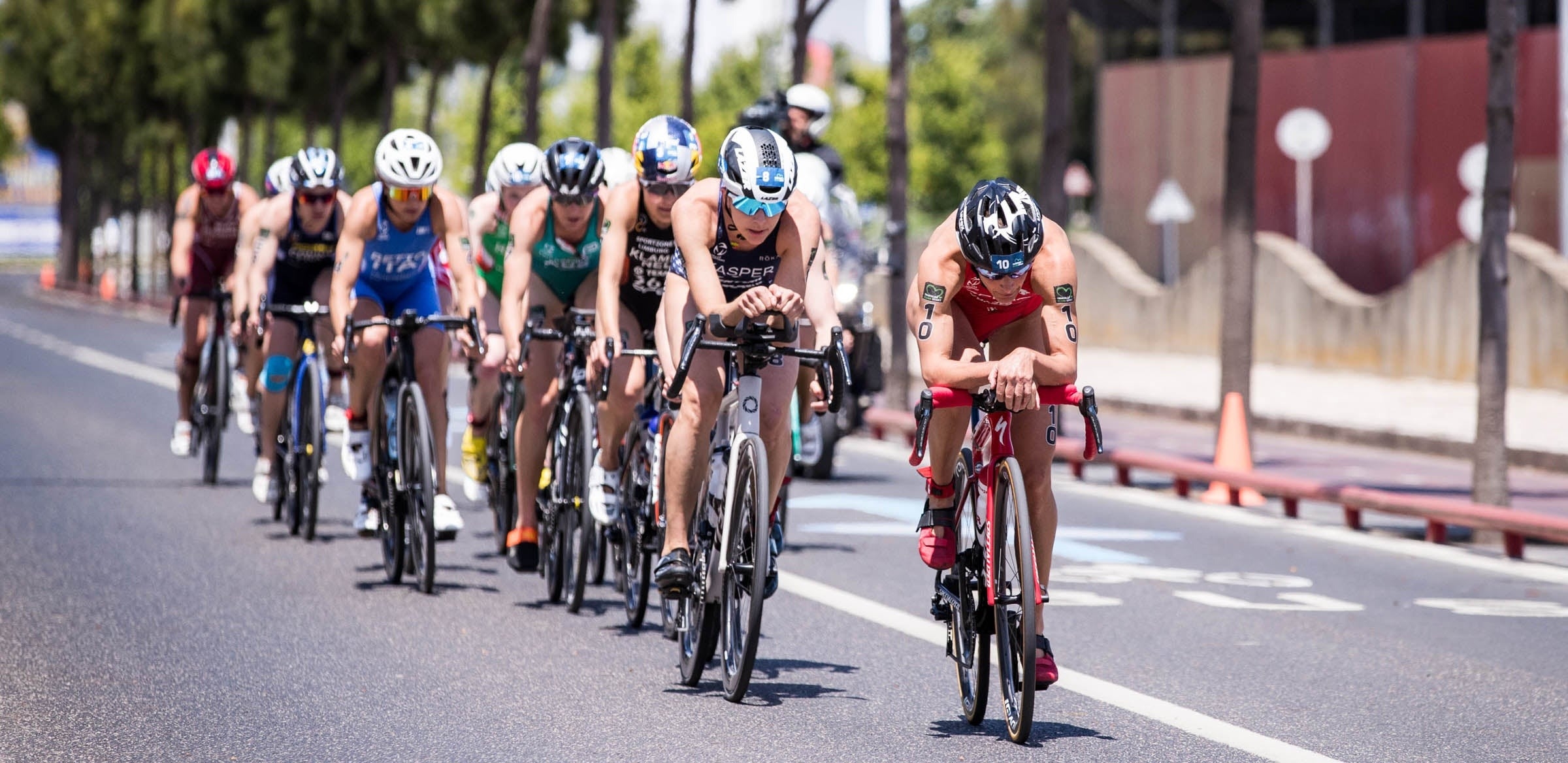

Featured
What Is Draft Legal Triathlon
Modified: January 22, 2024
"Discover what draft legal triathlon is and how it differs from other triathlon formats. Explore why draft legal triathlons are often featured in elite competitions."
Introduction
Welcome to the exciting world of draft legal triathlon! If you’re a triathlete looking to take your racing skills to the next level, then draft legal triathlon might be just what you need. This unique and thrilling form of triathlon introduces an additional element of strategy and competition, where athletes can draft behind each other during the bike leg of the race. In this article, we’ll explore the ins and outs of draft legal triathlon, including its definition, history, rules and regulations, equipment, training, and more.
Draft legal triathlon is a competitive format that adds an element of tactics and teamwork to the traditional triathlon. In non-draft legal triathlons, athletes are required to maintain a certain distance between themselves and others during the bike leg. However, in draft legal triathlons, athletes are allowed to closely follow each other in a peloton-like formation, taking advantage of the aerodynamic benefits that drafting provides. This creates a different dynamic and adds an additional level of strategy to the race.
The origins of draft legal triathlon can be traced back to the 1990s when the International Triathlon Union (ITU) started experimenting with shorter and more intense racing formats. The goal was to create a more spectator-friendly sport that showcased the speed and agility of the athletes. The draft legal triathlon format quickly gained popularity and became a staple in ITU events, including the prestigious ITU World Triathlon Series.
To participate in a draft legal triathlon, athletes must adhere to specific rules and regulations. These rules govern drafting distances, penalties for illegal drafting, and other race-related aspects. It’s essential for athletes to familiarize themselves with these rules to ensure a fair and safe competition. Additionally, athletes also need to consider the equipment and gear required for draft legal triathlons. Having a road bike, aero helmet, and cycling shoes optimized for speed and aerodynamics can give athletes an edge during the race.
Definition of Draft Legal Triathlon
Draft legal triathlon is a specific format of triathlon where athletes are allowed to closely follow each other on the bike leg of the race, taking advantage of the aerodynamic benefits that drafting provides. Unlike non-draft legal triathlons, where athletes must maintain a certain distance between themselves and others on the bike, draft legal triathlons create a more dynamic and strategic race environment.
In draft legal triathlons, athletes swim, bike, and run in a prescribed course, just like in traditional triathlons. However, during the bike leg, athletes can form drafting packs, similar to what is seen in cycling races such as the Tour de France. Drafting, also known as slipstreaming, occurs when one athlete closely follows behind another, benefiting from the reduced wind resistance. This allows the trailing athlete to conserve energy and enables faster cycling speeds.
The drafting distance, which is the distance an athlete must maintain behind the rider in front, varies depending on the race and the governing body. For example, in ITU (International Triathlon Union) draft legal races, the drafting distance is typically 12 meters or 7 bike lengths, while in some non-ITU races, the drafting distance may be shorter or longer.
One of the most critical aspects of draft legal triathlons is the ability to work together as a pack. Athletes strategically rotate positions within the pack to share the workload and maximize the drafting benefits. This dynamic creates exciting and unpredictable race scenarios, as athletes constantly juggle between conserving energy and positioning themselves for strategic moves.
While drafting in a triathlon can provide significant advantages, it also introduces additional challenges. Athletes must exhibit excellent bike handling skills, as riding in close proximity to others requires precision and attentiveness. Any sudden movement or lapse in concentration can result in collisions or penalties for illegal drafting, impacting an athlete’s overall race performance.
It is important to note that draft legal triathlon is not the standard format for all triathlons. Many races, particularly longer-distance and non-draft legal events, still adhere to the traditional non-drafting rules. However, draft legal triathlons have gained popularity, particularly in ITU events, where they are known for their fast-paced and action-packed nature.
History of Draft Legal Triathlon
The history of draft legal triathlon can be traced back to the 1990s when the International Triathlon Union (ITU) introduced the concept as a way to create a more spectator-friendly and exciting racing format. The goal was to showcase the speed and tactical aspects of triathlon and attract a broader audience to the sport.
In the early days of triathlon, drafting was not allowed in any form, and athletes had to maintain a minimum distance between themselves and others during the bike leg. This rule was put in place to prevent unfair advantages and to promote individual efforts. However, as the sport evolved, so did the desire for more intense and strategic racing.
The ITU, the governing body for the sport of triathlon, recognized the potential benefits of allowing drafting in certain races. In 1996, draft legal triathlon made its debut in the ITU World Cup circuit, with the goal of attracting more elite athletes and increasing the competitiveness of the sport.
The ITU’s decision to introduce draft legal triathlon was met with mixed reactions. Some athletes embraced the new format, seeing it as an opportunity to showcase their drafting skills and increase their chances of success. Others were initially skeptical, concerned that drafting would take away from the pure individual effort that defines triathlon.
Over time, however, draft legal triathlon gained traction and became an integral part of the triathlon landscape. The format proved to be popular with both athletes and spectators, as it introduced an element of strategy and teamwork to the race. It also allowed for more dynamic and exciting race scenarios, with tightly packed cycling packs and constant position changes.
The success of draft legal triathlon at the elite level soon led to its inclusion in the ITU World Triathlon Series, the highest level of competition in the sport. The series features races held in various locations around the world and attracts the top triathletes from across the globe. Draft legal races in the ITU World Triathlon Series are known for their fast and furious pace, demanding not only physical prowess but also tactical savvy.
Beyond the ITU World Triathlon Series, draft legal triathlon has also gained popularity in other events, such as age-group races and national championships. This allows amateur triathletes to experience the thrill of drafting and to compete in a format that replicates the intensity of elite-level racing.
Today, draft legal triathlon continues to evolve and thrive, with the ITU regularly refining and updating the rules to ensure fairness and safety. The format has opened doors for both professional and amateur triathletes, providing a unique and exhilarating racing experience that sets draft legal triathlons apart from their non-drafting counterparts.
Rules and Regulations
When it comes to draft legal triathlon, specific rules and regulations are in place to ensure fair competition and the safety of all participants. Athletes must adhere to these guidelines to avoid penalties or disqualification. Let’s take a closer look at some of the key rules and regulations of draft legal triathlon.
1. Drafting Distance: The drafting distance refers to the minimum gap that athletes must maintain between themselves and the rider in front of them. The specific distance may vary depending on the race and the governing body. For example, in ITU draft legal races, the drafting distance is typically 12 meters or 7 bike lengths. Athletes caught drafting closer than the designated distance may face penalties such as time penalties or disqualification.
2. Overtaking Zone: To prevent congestion and ensure fair passing opportunities, draft legal triathlons often have designated overtaking zones. Athletes are allowed to pass other competitors within these designated areas, encouraging fair competition and preventing obstruction on the course.
3. Drafting Penalties: If an athlete is caught drafting too closely or for prolonged periods, they may face penalties. The penalties can vary depending on the race and the severity of the drafting violation. Common penalties include time penalties, where the athlete must serve a specific amount of time in a penalty box before continuing the race, or disqualification from the event.
4. Helmet-to-Helmet Drafting: Helmet-to-helmet drafting, where athletes intentionally position themselves in close proximity to the back wheel of the rider in front, is not allowed in draft legal triathlons. This rule is in place to ensure the safety of all athletes and prevent crashes caused by sudden braking or swerving.
5. No Blocking: Athletes are not allowed to block or impede other competitors during the bike leg. Blocking refers to intentionally obstructing or interfering with another athlete’s progress, denying them a fair opportunity to pass or maintain their position.
6. Transition Zone Rules: The rules in the transition zone, where athletes switch from swimming to biking and then from biking to running, may vary depending on the race. It’s essential for athletes to familiarize themselves with any specific transition zone rules and guidelines to avoid penalties.
It is crucial for athletes competing in draft legal triathlons to thoroughly understand and follow these rules and regulations. This ensures fair play, creates a level playing field, and enhances the overall race experience for all participants.
Equipment and Gear
When it comes to participating in draft legal triathlon, having the right equipment and gear can make a significant difference in your performance. While the basic requirements for triathlon remain the same, there are some key considerations specific to draft legal triathlons. Let’s explore the essential equipment and gear needed for a successful draft legal triathlon.
1. Road Bike: A road bike is the most common type of bicycle used in draft legal triathlons. These bikes are lightweight, aerodynamic, and designed for speed. The geometry of a road bike allows for a more aggressive and efficient riding position, optimizing aerodynamics to maximize speed on the bike leg.
2. Aero Helmet: An aero helmet is a crucial component for reducing wind resistance and improving overall aerodynamics. These helmets are specifically designed to minimize drag and maintain smooth airflow around the head and shoulders. Aero helmets often feature a sleek, elongated shape and ventilation systems designed to balance aerodynamics with the athlete’s comfort.
3. Cycling Shoes: Proper cycling shoes can improve power transfer and help you make the most of each pedal stroke. Look for shoes with a stiff sole to ensure efficient energy transfer to the pedals. Triathlon-specific cycling shoes often have a quick-entry design, allowing for easy and fast transitions during the race.
4. Triathlon-Specific Apparel: Wearing the right triathlon-specific apparel is essential for comfort and efficiency during each leg of the race. Triathlon suits, often made from quick-drying and moisture-wicking materials, provide comfort during the swim, help maintain body temperature on the bike, and offer flexibility for the run.
5. Swim Gear: In addition to the bike and run equipment, don’t forget about the swim gear. A well-fitting swim cap and goggles are essential for clear vision and protection in the water. Consider using a wetsuit if allowed as it can provide additional buoyancy, insulation, and streamline your swim stroke.
It’s important to note that while having the right equipment can give you an advantage, skill and training are equally important factors. Prioritize practicing with your equipment, especially with your bike and helmet, to become comfortable and efficient during the race. Train in the specific gear you plan to use to understand how it affects your performance.
Lastly, always ensure that your equipment is in good condition and properly maintained. Regularly check your bike for any mechanical issues, such as tire pressure, brakes, and gears, to avoid any unexpected problems during the race. Properly fitting and functioning equipment will allow you to focus on your performance and enjoy the race.
Training and Preparation
Training and preparation are crucial aspects of successfully competing in draft legal triathlon. It takes dedicated training and a well-rounded approach to develop the skills and fitness required for this challenging format. Here are some key factors to consider when preparing for a draft legal triathlon.
1. Swim Training: Start your training by focusing on developing strong swimming skills. Incorporate swim workouts that improve both endurance and speed. Practice open water swimming to get comfortable with race conditions and sighting techniques. Work on your transitions from swim to bike to ensure efficient movements and minimize time loss.
2. Cycling Skills: Cycling in close proximity to other athletes requires excellent bike handling skills. Practice riding in groups and work on drafting techniques to get comfortable with the dynamics of a pack. Focus on maintaining a steady cadence and smooth pedaling technique. Include interval training sessions to improve your cycling speed and power.
3. Running Conditioning: Developing speed and endurance in your run is crucial for a successful draft legal triathlon. Incorporate a mix of tempo runs, interval training, and long runs into your training program. Include brick workouts, which involve transitioning from a bike ride to a run, to practice running on fatigued legs.
4. Race Simulation: Simulating race conditions in your training is essential for mentally and physically preparing for a draft legal triathlon. Practice swim-bike and bike-run transitions to improve your transition times and adapt to the quick pace of a race. Incorporate race-specific drills and workouts to familiarize yourself with the demands of the race format.
5. Strategy and Tactics: Draft legal triathlon involves strategic decision-making during the race. Develop race strategies for different scenarios, such as when to make a breakaway or how to position yourself within a pack. Practice race-specific tactics during your training sessions to hone your decision-making skills.
6. Nutrition and Hydration: Proper nutrition and hydration play a vital role in your performance. Develop a nutrition plan that provides adequate fuel before, during, and after training sessions and races. Experiment with different energy gels, sports drinks, and snacks to find what works best for you during training and racing.
7. Mental Preparation: Draft legal triathlon can be intense and demanding, both physically and mentally. Develop mental strategies to stay focused, motivated, and confident during training and races. Visualization techniques and positive affirmations can help you stay mentally strong and resilient throughout the competition.
Remember to listen to your body and prioritize recovery and rest. Give yourself enough time to recover between intense training sessions to avoid overtraining and minimize the risk of injury. Incorporate flexibility and strength training exercises into your routine to improve overall athleticism and injury prevention.
By following a well-structured training program, practicing race-specific skills, and maintaining a disciplined approach, you will be well-prepared to tackle the challenges and enjoy the excitement of a draft legal triathlon.
Differences between Draft Legal and Non-Draft Legal Triathlons
Draft legal triathlons and non-draft legal triathlons have distinct characteristics that set them apart. Understanding these differences is important for triathletes considering which type of race to participate in. Let’s explore the key variations between draft legal and non-draft legal triathlons.
1. Drafting: The most significant difference between the two formats is drafting. In draft legal triathlons, athletes are allowed to closely follow each other on the bike leg, utilizing the aerodynamic benefits of drafting. Conversely, in non-draft legal triathlons, athletes must maintain a certain distance between themselves and others on the bike, prohibiting drafting.
2. Strategy: Draft legal triathlons introduce an extra layer of strategy compared to non-draft legal races. Athletes in draft legal triathlons can work together within a pack, taking turns leading and conserving energy behind other riders. Non-draft legal races focus more on individual effort, where athletes aim to maintain a consistent pace throughout the entire race without the cooperative aspect of drafting.
3. Skill Requirements: Draft legal triathlons require a different set of skills compared to non-draft legal races. Athletes participating in draft legal events need to develop bike handling skills, such as riding in close proximity to others and making quick decisions within a fast-paced peloton. Non-draft legal races tend to emphasize individual fitness and pacing abilities.
4. Race Dynamics: The race dynamics are distinct between draft legal and non-draft legal triathlons. Draft legal races often feature tightly packed groups of athletes on the bike leg, resulting in more frequent position changes, breakaways, and tactical maneuvering. The race can be more dynamic and unpredictable. Non-draft legal races tend to have athletes more spread out on the bike course, with less interaction and overtaking.
5. Aesthetic Appeal: Draft legal triathlons have often been designed to be spectator-friendly, with loops or multiple laps in a compact area that allows viewers to witness the action up close. Non-draft legal races may have longer and more spread-out courses, making it harder for spectators to observe the entire race.
6. Race Lengths: Both draft legal and non-draft legal triathlons can encompass various distances, from sprint to Olympic to long-distance races. Draft legal events are commonly seen in shorter formats, such as sprint or Olympic distance, where drafting is considered to have a greater impact on the overall race outcome. Non-draft legal races are prevalent in longer distances, such as half Ironman and Ironman events.
It’s important to note that athletes who mainly participate in one format may need to adjust their training and racing strategies when switching to the other. The skills and tactics employed in draft legal triathlons may differ from those needed in non-draft legal races.
Whether you prefer the strategic and fast-paced nature of draft legal triathlons or the individual challenge of non-draft legal races, both formats offer unique experiences and opportunities for triathletes to push their limits and compete at their best.
Pros and Cons of Draft Legal Triathlon
Like any racing format, draft legal triathlon comes with its own set of advantages and disadvantages. Understanding the pros and cons of participating in draft legal triathlons can help you make an informed decision about whether this format aligns with your goals and preferences. Let’s explore the pros and cons of draft legal triathlon.
Pros:
- Exciting Race Dynamics: Draft legal triathlons offer a fast-paced and dynamic racing experience. The ability to draft behind other athletes creates opportunities for strategic moves, position changes, and exciting sprint finishes.
- Athletic Skill Development: Draft legal triathlons require athletes to develop specific bike handling and drafting skills. These skills translate to improved bike control, pack riding abilities, and the ability to efficiently navigate tight race courses.
- Teamwork and Collaboration: Draft legal triathlons introduce team tactics and the opportunity for athletes to work together within a pack. Collaborative efforts such as breakaways and shared workload within the pack can enhance the overall race experience.
- Aerodynamic Advantage: Drafting behind other cyclists reduces wind resistance, resulting in improved aerodynamic efficiency. This can lead to faster bike splits and conserve energy for the run leg.
- Increased Spectator Appeal: The close and dynamic racing in draft legal triathlons often translates to an engaging and visually captivating experience for spectators. The constant proximity and jostling for position can make for thrilling viewing.
Cons:
- Higher Risk of Collisions: With athletes cycling in close proximity, the risk of collisions or accidents increases in draft legal races. Riders need to exhibit excellent bike handling skills and situational awareness to minimize the risk of crashes.
- Penalty Potential: The drafting rules in draft legal triathlons are strict, and penalties can be imposed for illegal drafting. Accidental drafting infringements or misjudgments can result in time penalties or disqualification, impacting an athlete’s overall race performance.
- Increased Race Complexity: The strategic and dynamic nature of draft legal triathlons can add complexity to race planning and execution. Athletes must make split-second decisions regarding position within the pack, timing of breakaways, and responding to the tactics of other competitors.
- Dependence on Pack Performance: Athletes in draft legal triathlons may find themselves depending on the performance and cooperation of others within the pack. Success can hinge on the ability to work well with others and take advantage of the strengths of the group.
- Less Control Over Race Outcome: While draft legal triathlons offer opportunities for strategic moves, the outcome of the race can be influenced by external factors, such as the actions of other athletes in the pack. This can make it challenging to predict or fully control the race outcome.
It’s essential to weigh these pros and cons against your racing preferences and goals. Consider your strengths, race strategy preferences, and comfort level in close-quarters racing when deciding whether to pursue draft legal triathlons.
Notable Draft Legal Triathlon Events
Draft legal triathlon has gained popularity worldwide, and several notable events showcase the excitement and competitive nature of this racing format. Athletes from elite to age-group categories have the opportunity to compete in these prestigious races. Let’s explore some of the notable draft legal triathlon events.
- ITU World Triathlon Series: The ITU World Triathlon Series (WTS) is the pinnacle of draft legal triathlon. This annual series features races held in iconic locations around the world and attracts top triathletes from across the globe. The WTS offers both sprint and Olympic distances, allowing athletes to compete against the best in the world in a draft legal format.
- ITU World Cup: The ITU World Cup circuit offers draft legal races at various locations, providing a stepping stone for athletes aiming to compete at the elite level. These races feature a mix of emerging talent and seasoned professionals, providing a highly competitive environment and a platform for athletes to gain valuable experience.
- Super League Triathlon: Super League Triathlon is a unique and spectator-friendly triathlon series that incorporates draft legal racing. It features multiple formats, including the Triple Mix, Eliminator, and Enduro formats, which challenge athletes with rapid-fire races and intense back-to-back legs. Super League Triathlon events showcase high-octane racing designed to push athletes to their limits.
- ITU Grand Final: The ITU Grand Final is the culmination of the ITU World Triathlon Series. It is usually held at the end of each season and features the best triathletes competing across multiple race formats, including the elite draft legal races. The event serves as the ultimate showcase of the sport and determines the world champions in various categories.
- National Championships: Many countries host their own national draft legal triathlon championships, where top athletes compete for the national title. These championships contribute to qualifying athletes to represent their respective countries at international events such as World Cups, World Championships, and Olympic Games.
These notable draft legal triathlon events attract elite athletes, create thrilling race conditions, and provide a platform to witness the sport’s top contenders in action. They showcase the intensity, tactical prowess, and athletic abilities required in the draft legal format.
Participating in these events offers an opportunity for athletes to measure their skills against the best in the world, gain experience in high-level competition, and potentially earn qualification for international events. Both elite and age-group triathletes can compete in these races and experience the excitement and camaraderie that draft legal triathlon offers.
Conclusion
Draft legal triathlon presents triathletes with an exciting and dynamic racing format that adds an element of strategy and collaboration. This unique style of competition allows athletes to work together within a pack, drafting off each other to maximize aerodynamic efficiency and conserve energy on the bike leg. While drafting introduces its own set of challenges and risks, it also creates exhilarating race dynamics and opportunities for tactical moves.
Understanding the rules and regulations of draft legal triathlon is essential to ensure fair play and a level playing field. Athletes must familiarize themselves with the drafting distances, overtaking rules, and penalties for illegal drafting to avoid time penalties or disqualification.
Training and preparation for draft legal triathlon require a focus on specific skills such as bike handling and pack riding. Developing a strong swim, bike, and run foundation, along with race-specific tactics and mental fortitude, will contribute to success in draft legal races.
While draft legal triathlon may not be suited for every athlete or race scenario, it offers a thrilling and spectator-friendly experience. Notable events on the international stage, such as the ITU World Triathlon Series and Super League Triathlon, showcase the best in draft legal racing and provide a platform for athletes to challenge themselves and compete at the highest level.
Ultimately, the decision to participate in draft legal triathlon depends on each individual’s racing preferences, skillset, and goals. Whether you thrive on the intensity and teamwork of drafting or prefer the individual challenge of non-draft legal races, the world of triathlon offers options for everyone to push their limits and find their own path to success.
